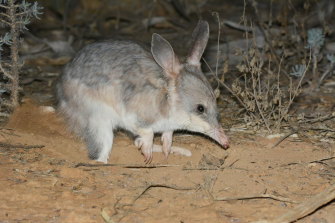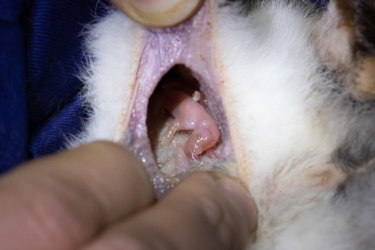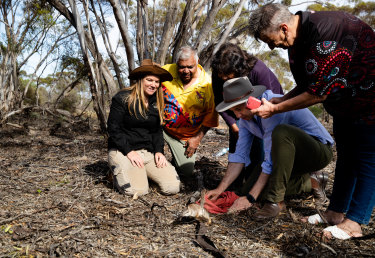Fenced-off regions to help make greater bilbies great again in NSW
Numbers of re-introduced greater bilbies are thriving in a specially protected region of the Mallee Cliffs National Park, allowing rangers to expand the critically endangered marsupials’ range and plan for more such releases.
Presumed extinct in NSW after once being common, the large-eared animals known as Australia’s Easter Bunny are responding quickly in their new homes in the state’s south-west after about 50 of them were released 18 months ago. The population is now estimated to be at least 118.

Higher numbers of the greater bilbies are popping up in the Mallee Cliffs National Park, just months after their re-introduction back into the wild in NSW.Credit:Wayne Lawler, Australian Wildlife Conservancy
“The population is booming and projected to increase to up to 1100 bilbies in Mallee Cliffs alone,†Environment Minister Matt Kean, said.
“It is estimated that feral cats alone kill more than 1.5 billion native animals every year and small- to medium-sized mammals are especially vulnerable, so we need projects like these to remove threats and give our native species a fighting chance.â€
The early success of bilbies within a small area of the national park means ecologists can start moving them to a larger 9500-hectare fenced off area that has been cleared of feral predators such as cats and foxes. Similar efforts are under way in the Sturt National Park and the Pilliga State Conservation Area.
“When at full capacity, there will be about 3500 bilbies across the three sites,†Atticus Fleming, deputy secretary of the NSW National Parks and Wildlife Service, said. “The current Australian population is around 9000, so that amounts to about a 35-40 per cent increase to the total.â€
Rangers have already re-introduced six threatened species including numbats into the Mallee Cliffs National Park, with plans for the release of six more by 2024.
The government plans to create four more feral-free areas across the state, expanding to 65,000 hectares, or about 230 times the size of Sydney’s Central Business District. One of those, of about 500 hectares, is planned for western Sydney.

A bilby pup grows inside her mother’s pouch, soon to add to the growing population of the reintroduction marsupial.Credit:Brad Leue, via NSW government
Richard Kingsford, director of the Centre for Ecosystem Science at the University of NSW, welcomed the success of the Mallee Cliffs bilbies.
“This is great â€" we are also seeing very good breeding of bilbies at the other safe haven at Sturt National Park,†Professor Kingsford said. “It just shows when you can manage threats, cats and foxes in this case, our native mammals can bounce back.â€
The next challenge will be to work out small mammals like the numbat, Mitchell’s hopping mouse or if the red-tailed phascogales can become “cat smart†to allow for even wider release at least until strategies to eliminate the ferals make more progress.

Tali Moyle (left), a wildlife ecologist with the Australian Wildlife Conservancy, looks as Environment Minister Matt Kean releases a numbat in the Mallee Cliffs National Park. Also watching on are Barkandji Traditional Owners (left to right), Warren Clark, Betty Pearce and Kathy Potter.Credit:Janie Barrett
Liam Mannix’s Examine newsletter explains and analyses science with a rigorous focus on the evidence. Sign up to get it each week.
Peter Hannam writes on environment issues for The Sydney Morning Herald and The Age.
0 Response to "Fenced-off regions to help make greater bilbies great again in NSW"
Post a Comment